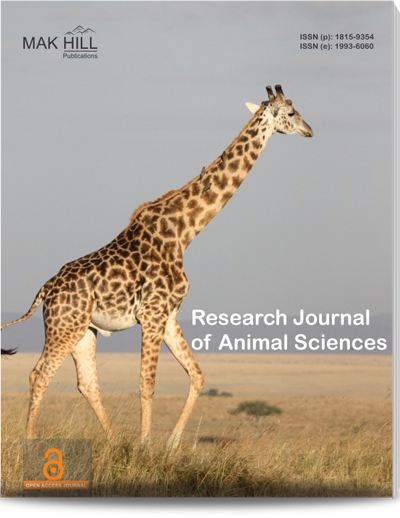
Research Journal of Animal Sciences
ISSN: Online 1994-4640ISSN: Print 1993-5269
Abstract
The present research was done on 82 stray dogs to be investigated for filariasis, hematological and serum chemistry profiles of naturally infested dogs. Out of the examined dogs, 14 (17.1%) were infested with Dipetalonema reconditum, 12 (85.7%) of them were males and 2 dogs (14.3%) were females. Microfilariae appeared as a snake like with a rapidly, forward movement across the microscopic field in wet smear while in Giemsa stained smears showed a coiled or twisted appearance. Hematological studies revealed hemolytic anemia (macrocytic hypochromic type) associated with low erythrocyte counts, hemoglobin concentration and hematocrit value. A marked increase in erythrocyte sedimentation rate, reticulocyte, thrombocyte, total and differential leucocytic counts were encountered, in comparison with the control group. Biochemical analysis of sera from infested dogs showed a significant increase in serum alanine aminotransferase (ALT) and aspartate aminotransferase (AST) activities, serum bilirubin (total and indirect), total proteins, globulins, urea nitrogen, creatinine, inorganic phosphorus, potassium and a decrease in serum glucose, albumin, calcium and sodium values, with insignificant change in the magnesium level. It could be concluded that infestation of dogs with filariasis induced a hemolytic anemia, with disturbance in the liver and kidney functions.
How to cite this article:
Mohamed A. Hashem and A.I.I. Badawy . Blood Cellular and Biochemical Studies on Filariasis of Dogs.
DOI: https://doi.org/10.36478/rjnasci.2008.128.134
URL: https://www.makhillpublications.co/view-article/1993-5269/rjnasci.2008.128.134